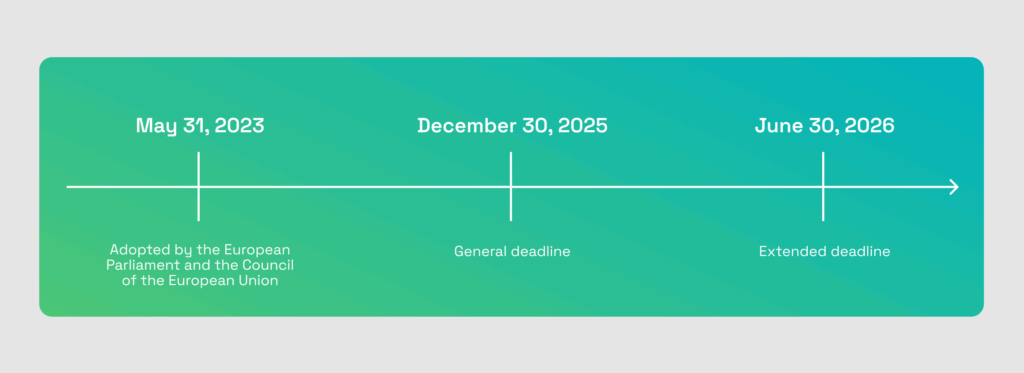Community
osapeers.org
This article is available in
About this article

Lea Roth
AuthorAssigned categories
Since 1990, an estimated 420 million hectares of forest – an area larger than the EU – have been lost due to conversion to agriculture or other land uses. Although the global rate of deforestation has slowed down over the past 30 years, significant efforts are still required to create a lasting impact. The EU Deforestation Regulation (EUDR) aims to combat deforestation and its far-reaching consequences. To achieve this, companies trading, processing, importing, exporting or distributing products made from the commodities covered by the EUDR or specific derived products need to ensure that their products do not contribute to deforestation or forest degradation.
The commodities regulated under the EUDR include wood, coffee, cocoa, rubber, palm oil, cattle, and soy.
To comply with EUDR regulations, companies need to prove that the materials used in their products do not originate from land that was deforested after December 31, 2020. This involves the following steps:

Whether a company is affected by the EUDR does not depend on its size. Therefore, small and medium sized businesses can also be subject to the regulation. In fact, SMEs account for 90% of operators importing EUDR-regulated products. However, certain relief measures may apply to SMEs. For example, extended deadlines are available to companies that were not previously subject to EUTR and fulfil two of the following three criteria:
In all other cases, the general deadline for EUDR compliance (December 30, 2025) applies.

Some SMEs may use the Due Diligence Statement provided by their upstream suppliers. This is the case for the following SMEs:
One of the key challenges SMEs face with the EUDR is the significant amount of manual work as well as workforce but also costs required to ensure compliance. This is where the osapiens HUB for EUDR comes in. By automating key processes and reducing manual effort, the platform enables companies to meet EUDR requirements in a resource-efficient way. With osapiens Easy Start, osapiens offers a solution for certified EUDR compliance tailored specifically to SMEs. Centralized data collection, automated reporting, and efficient data sharing for business partners help reduce both the time and costs associated with compliance.
osapiens Easy Start supports companies throughout the entire EUDR compliance process – from efficient data collection and risk assessment to the automated generation of legally compliant Due Diligence Statements. It includes pre-built templates for risk analyses, mitigation actions and supplier questionnaires, along with automated workflows that simplify every step. Integrated deforestation and legality risk analyses are enabled by high-resolution satellite imagery from three different programs and automated verification of legality risks. In addition, the direct connection to the EU TRACE system allows the generation of due diligence reference numbers. Finally, the included multi-session training program and a reduced starter price ensure a smooth start into EUDR compliance.
With technologies like the osapiens HUB for EUDR, compliance becomes not only stress-free, less complex and less expensive but also advantageous in areas outside legal compliance. By increasing supply chain transparency, companies can meet changing customer expectations towards both sustainable as well as socially and ecologically responsible products. This way, compliance becomes not just an obligation, but also a competitive advantage.